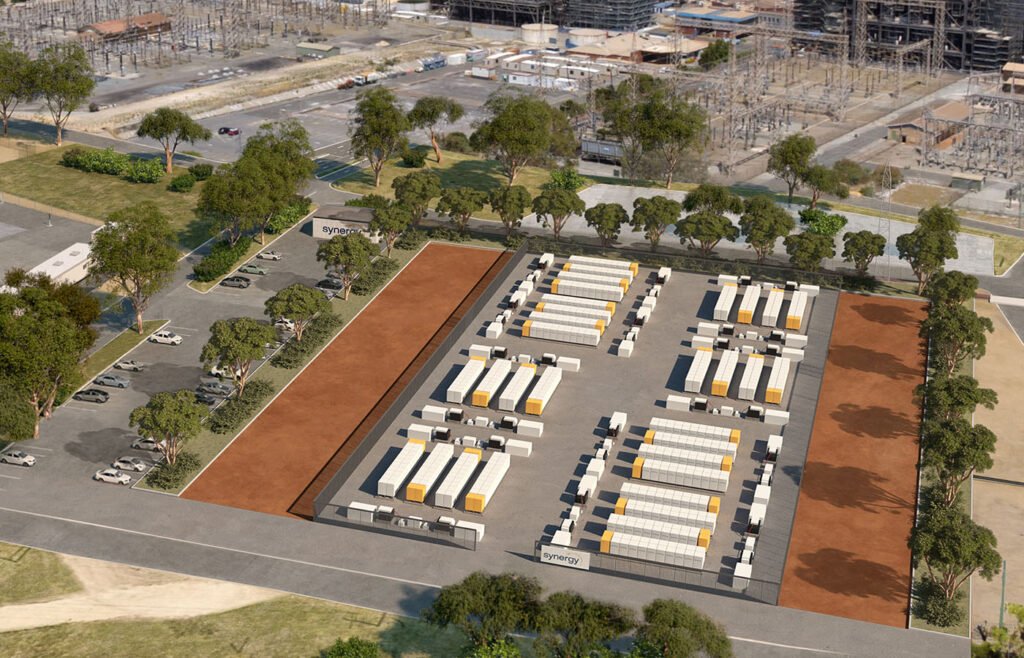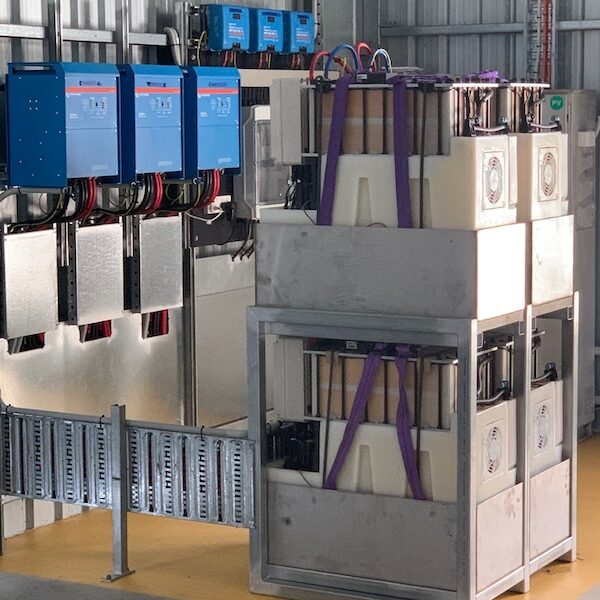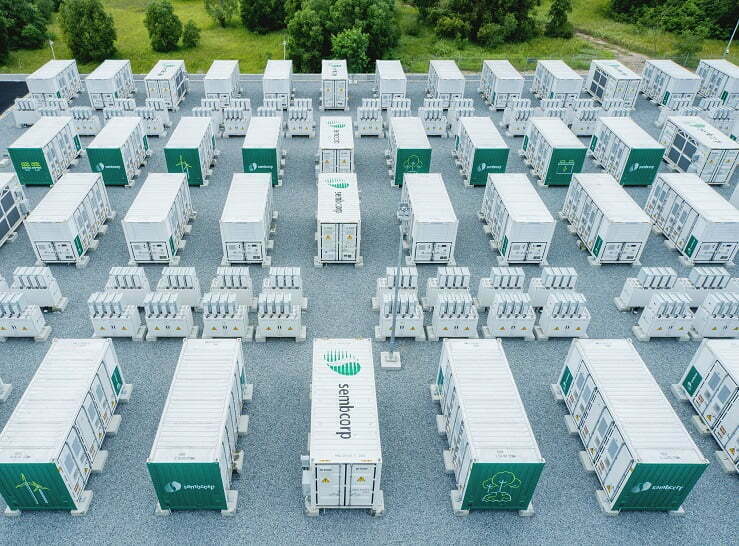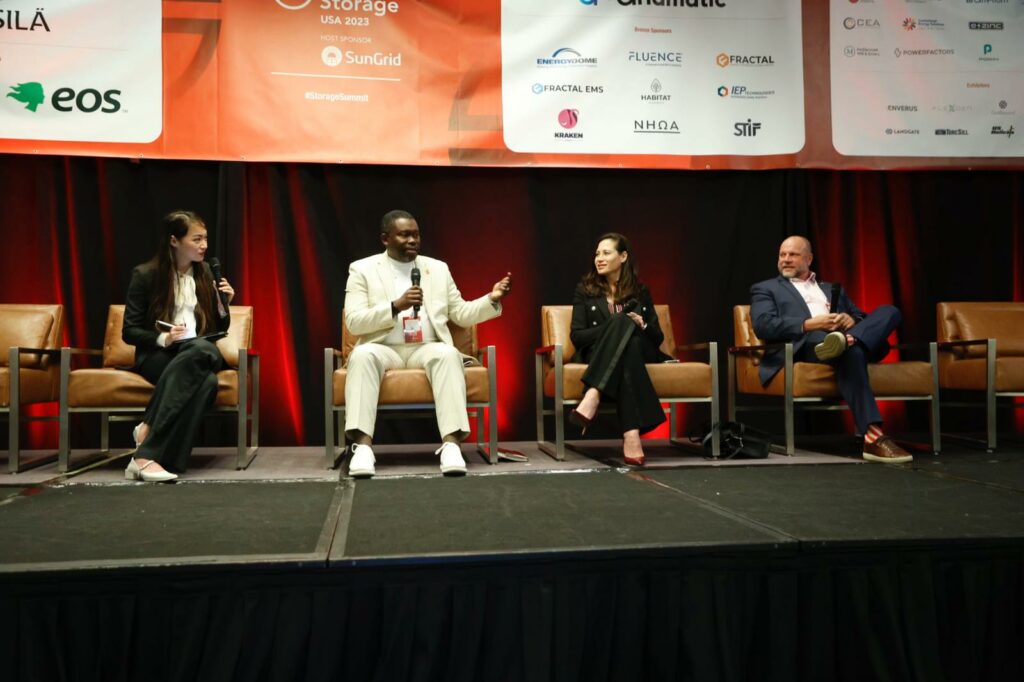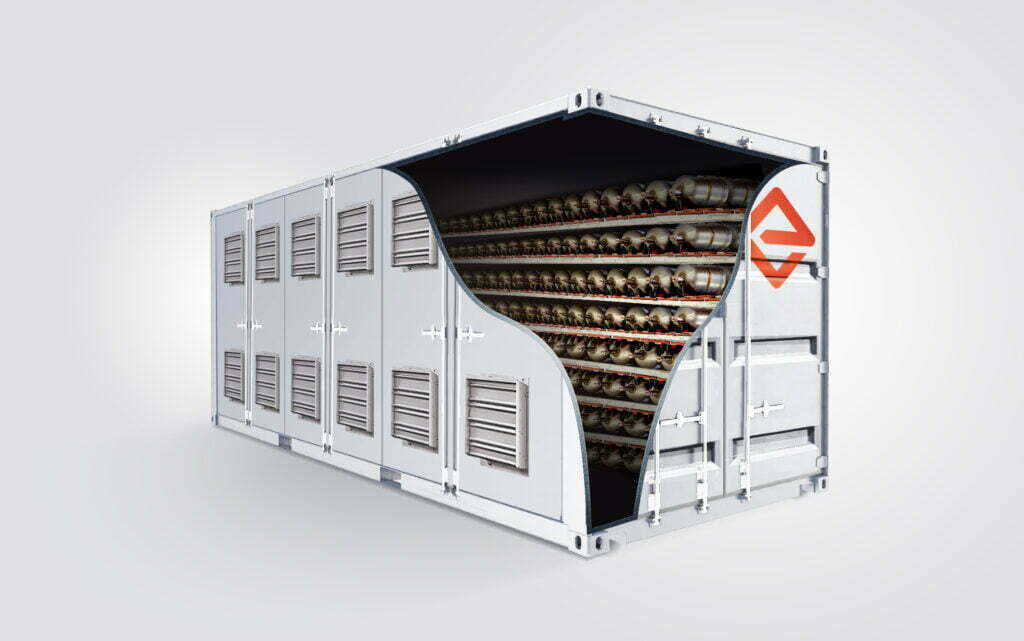A render of the 100MW Kwinana BESS NHOA is nearing completion for Synergy in Western Australia. Image: Synergy/NHOA.
NHOA’s energy storage business accounted for the vast majority of the company’s €165.7 million (US$180 million) reported revenues in 2022, a year-on-year growth of 448%.
Reporting its financial results for last year, the Italy-headquartered company said yesterday that €153.6 million revenue was recognised by its energy storage global business line (GBL), which focuses on utility-scale standalone energy storage and solar-plus-storage projects as well as microgrids.
The revenue figures exceed the upper end of the company’s 2022 guidance, which had been in the range of €140 million to €160 million.
Referring to energy storage as NHOA’s “growth engine” as it has done in previous results announcements, the company reported EBITDA for energy storage at over €2 million, alongside an order intake of €240 million and a backlog of €301 million. The company currently has 1.4GWh of energy storage projects in construction and claimed a €1,043 million pipeline of opportunities.
NHOA, formerly known as Engie EPS before its acquisition and rebranding by Taiwan Cement Corporation (TCC), is also active in the e-mobility and electric vehicle (EV) fast-charge infrastructure spaces.
With the company seeking to expand its presence and capabilities in all its divisions, costs of doing business were high in 2022, including the hiring of new workers and a 285% rise in operating costs.
Overall, the group’s 2022 EBITDA amounted to a €32.9 million loss in 2022, compared to €13.2 million the previous year. Net result was -€52.2 million by the end of last year, compared to -€28.4 million at the end of 2021. Against its €165.7 million total revenue, cost of sales was €150.6 million.
The company also said its net financial position as of the end of the year when it held €4.2 million versus the €74.3 million it held at the end of 2022 was a reflection of investments into the EV fast charge segment as well as “working capital consumed by the Energy Storage GBL”.
That money helped NHOA progress to get more than 300MWh of battery energy storage system (BESS) capacity commissioned or close to commissioning by the end of 2022, while its BESS assembly plant in Cosio Valtellino, Italy assembled 230MWh of BESS during the year and has since October been producing 45MWh per month (equivalent to 540MWh annual production capacity).
NHOA also touted BESS project wins that happened during the winter, most notably its award of the 200MW/400MWh supply contract to Blyth Battery in South Australia by developer Neoen, as well as projects for parent company TCC in Taiwan and projects in the US.
Projects it currently has under construction include the Kwinana 100MW/200MWh BESS in Western Australia for integrated utility Synergy nearing its commissioning phase and a 107MWh project in Yingde, China, four US projects totalling 78.8MWh. One of its several large-scale Taiwan projects for TCC went into commercial operation recently, and another 311MWh is in installation and approaching commissioning, NHOA said.
Energy-Storage.news’ publisher Solar Media will host the 1st Energy Storage Summit Asia, 11-12 July 2023 in Singapore. The event will help give clarity on this nascent, yet quickly growing market, bringing together a community of credible independent generators, policymakers, banks, funds, off-takers and technology providers. For more information, go to the website.
Continue reading

